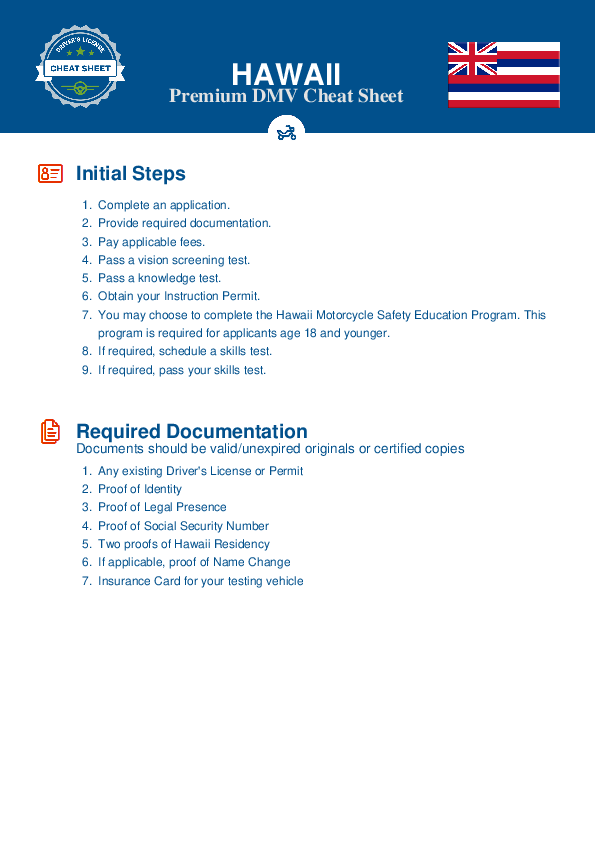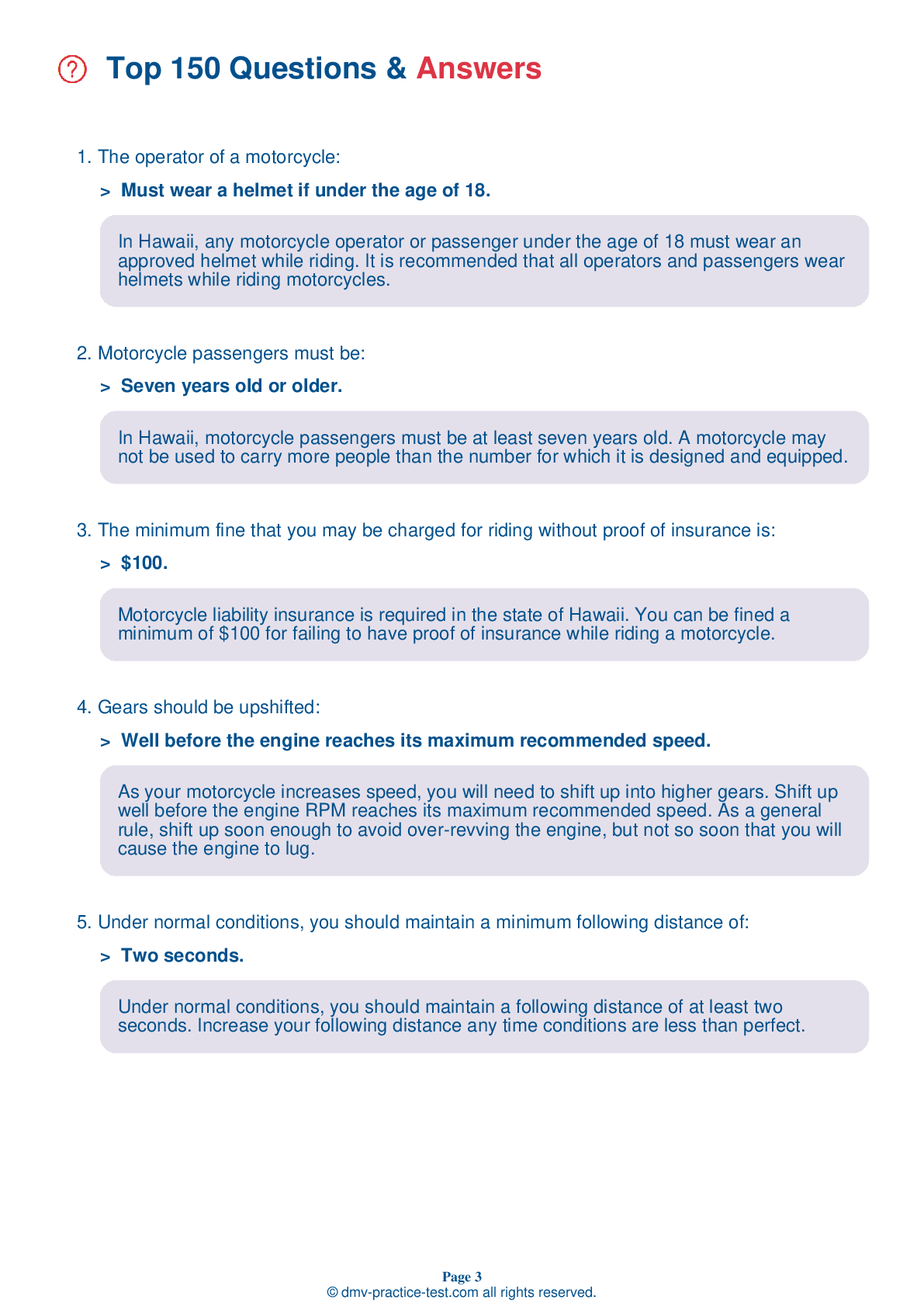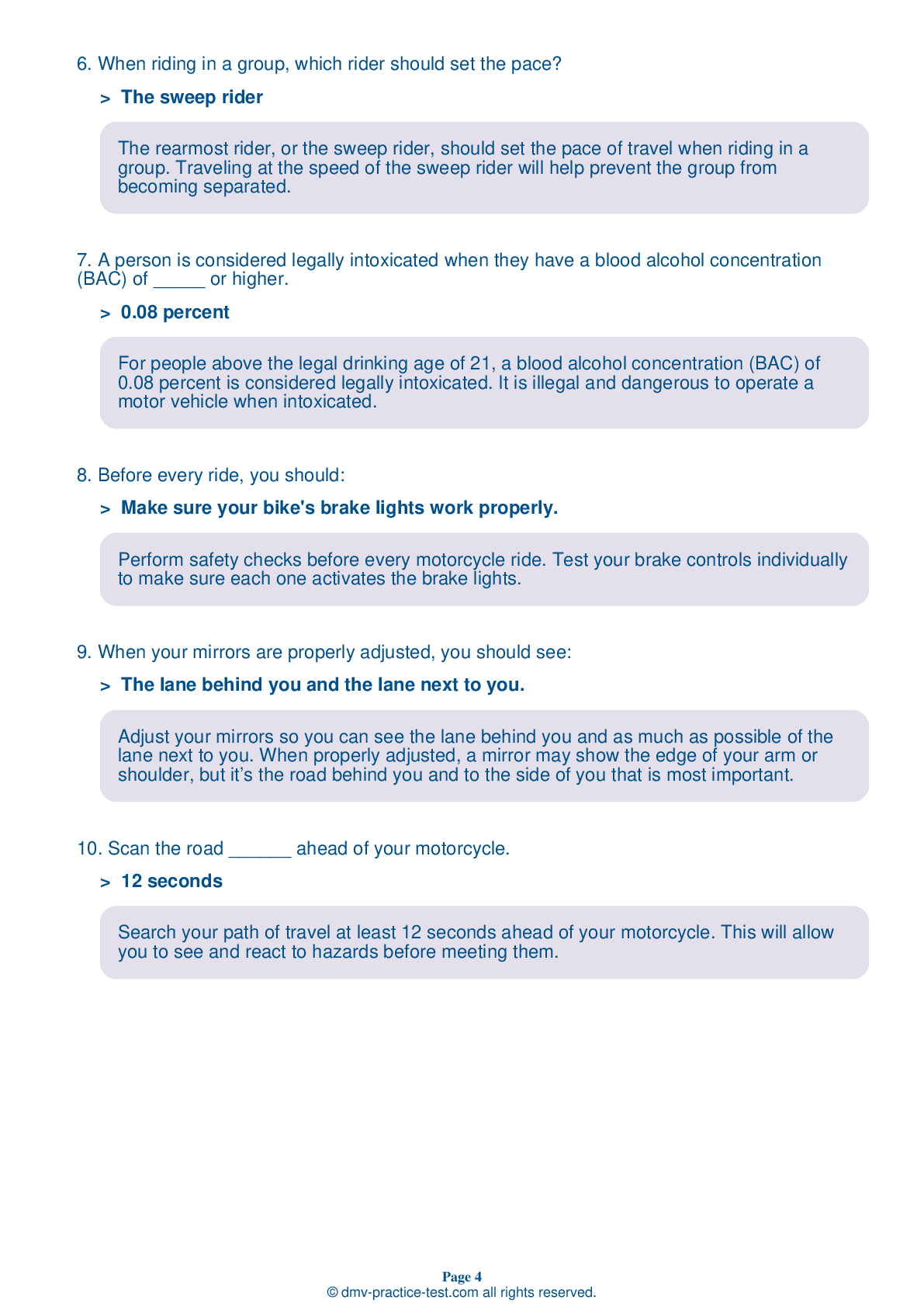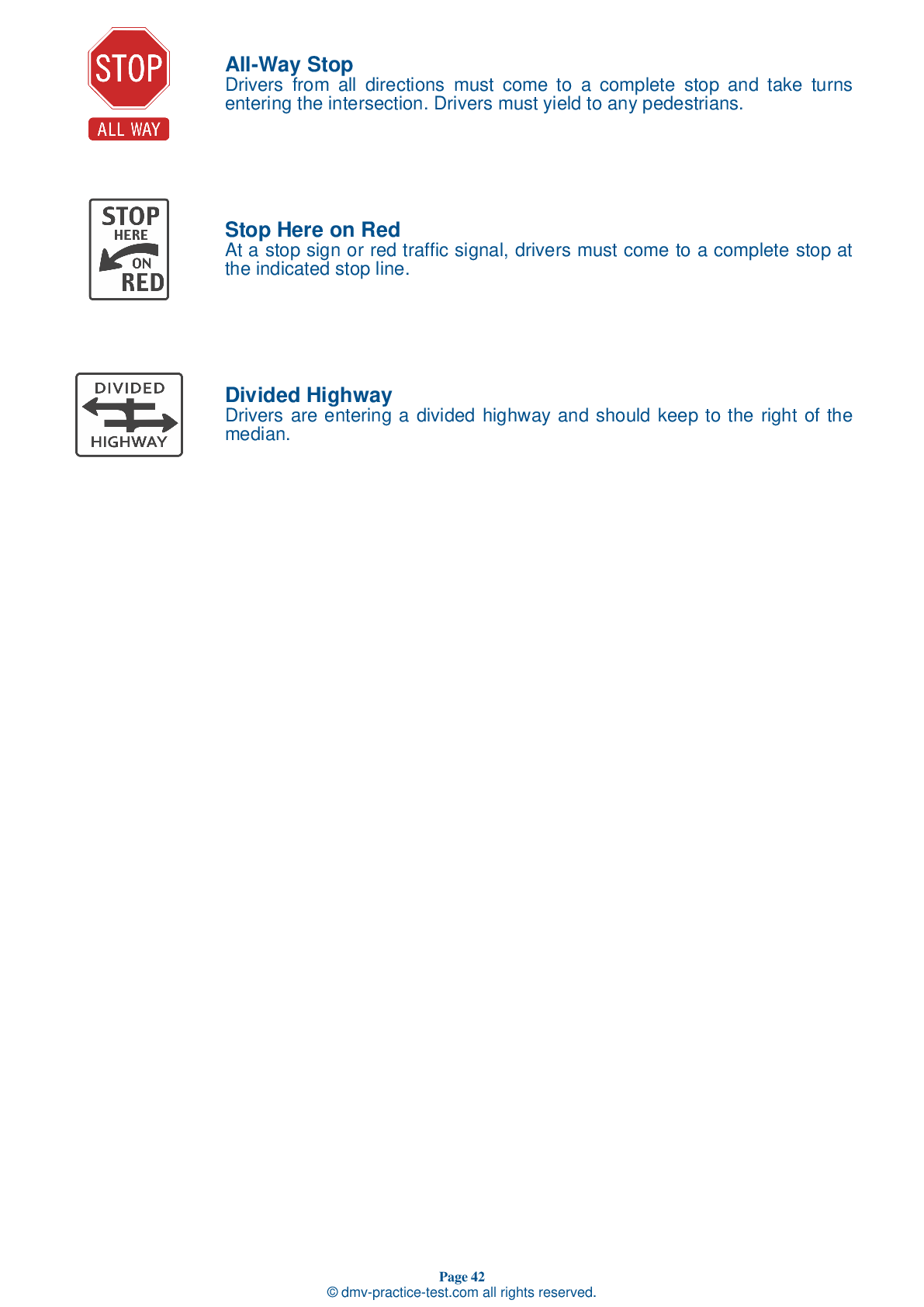Motorcycle Test | License HI 2025 | FREE Online Practice! #6
Take this FREE motorcycle test (license in HI 2025) to check your knowledge of the road rules. To improve your results, download a motorcycle handbook online, study theory, and practice for free on our website. Still worried about how to get a motorcycle license in Hawaii in 2025? Check our website for more sample tests, train as much as possible, and boost your grades!
1 . When entering a turn, a rider should:
Before entering a turn, a motorcyclist should reduce their speed by closing the throttle and, if necessary, applying both brakes.
2 . When the road is slippery, maintain a following distance of at least:
An expanded cushion of space is needed if your motorcycle will take longer than normal to stop. If the pavement is slippery, if you cannot see through the vehicle ahead of you, or if traffic is heavy and another driver may try to squeeze in front of you, open up to a minimum three-second following distance.
3 . A yellow and black diamond-shaped sign:
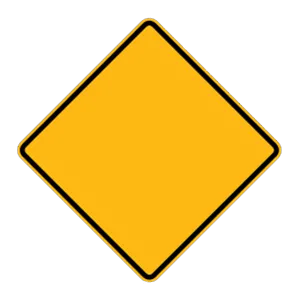
Warning signs, which tell you about conditions on or near the road ahead, are usually diamond-shaped with black symbols or words on a yellow background.
4 . A pre-ride inspection should:
It is important to do a thorough inspection of your motorcycle before every ride. This will usually take you only a few minutes.
5 . When a lead rider is extending their left arm and pointing downward, it means:
Hand signals are an important part of communication when riding in groups. When a lead rider is extending their left arm and pointing downward, it means there is a hazard in the roadway on their left side.
6 . A motorcycle rider can reduce the risk of head and neck injuries:
Wearing a helmet can significantly reduce a motorcyclist's chances of suffering a head or neck injury in the case of an accident. It is recommended that all motorcycle operators and passengers wear a DOT-approved helmet while riding.
See the exact questions that will be on the 2025 Hawaii DMV exam.
99.2% of people who use the cheat sheet pass the FIRST TIME
Jeneen was tired of paying $5/gallon. She got herself a scooter that required the motorcycle license. She studyed the motorcycle test cheat sheet and passed her test the next day!
Christopher tells us how he knew nothing prior to obtaining the motorcycle study guide, and he only got one question wrong because he clicked on the wrong answer by mistake.
